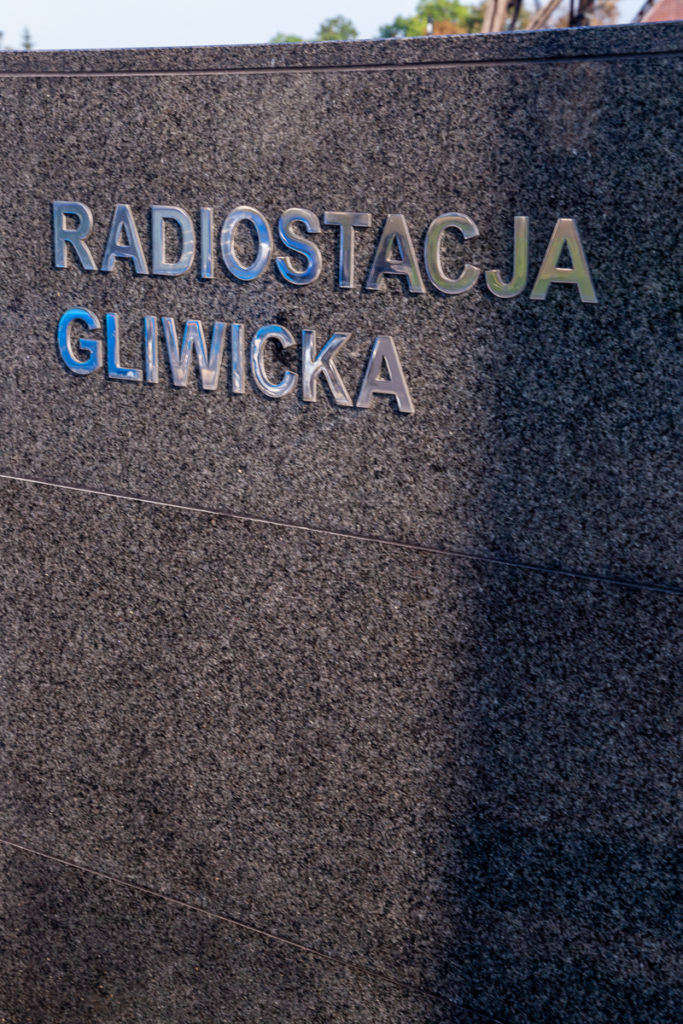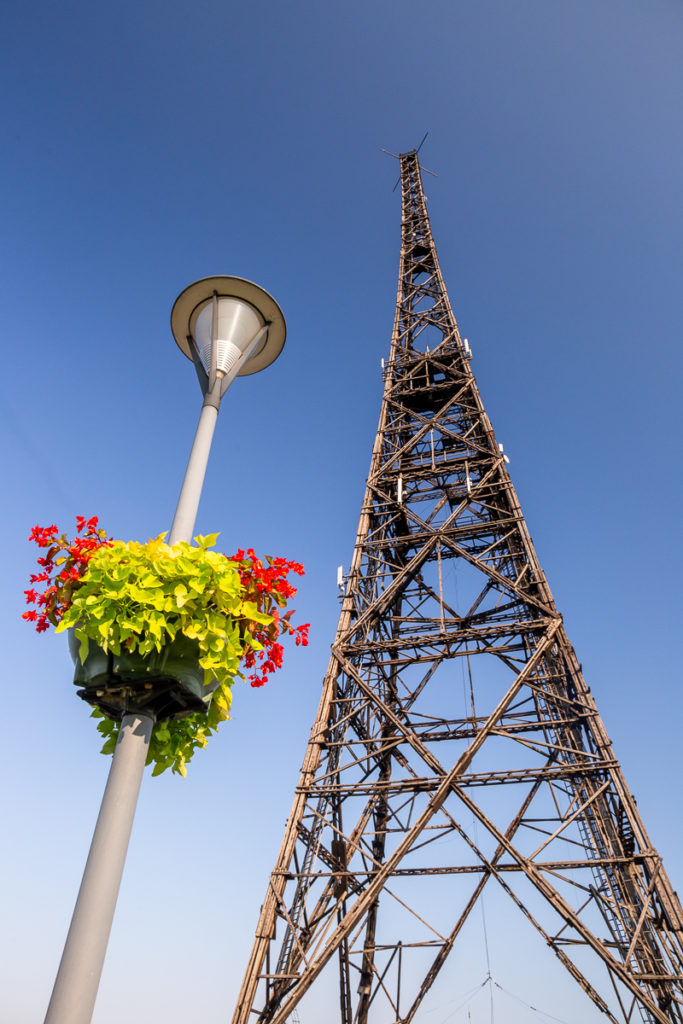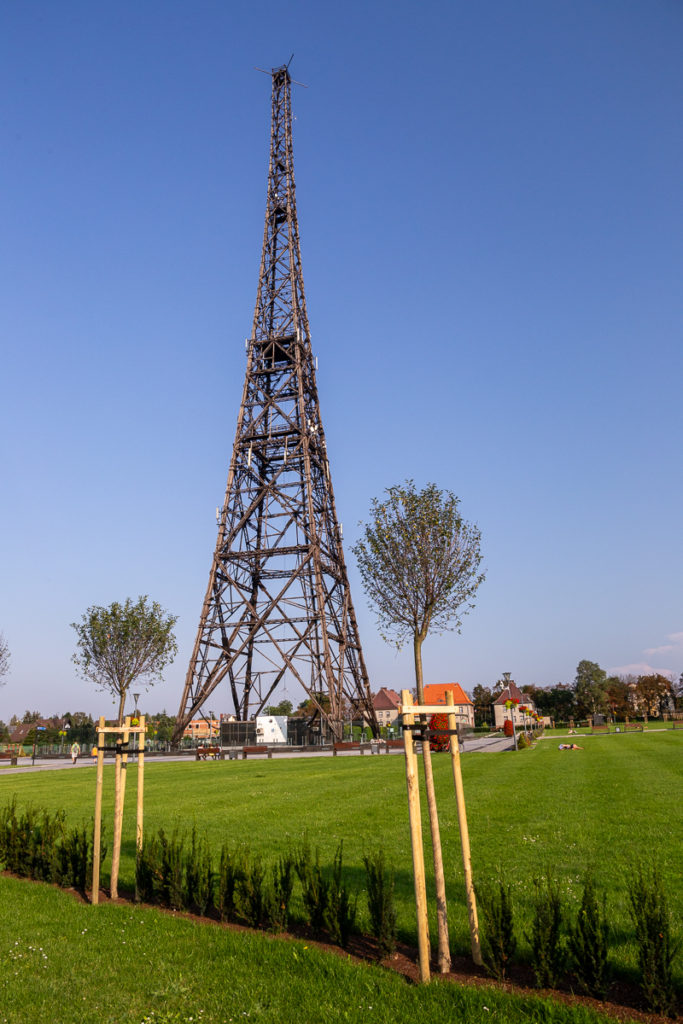So much has been written and said about Auschwitz, there is little I can add. I found it difficult, especially in the buildings. The closeness of the walls made me dizzy. Our guide talked to us through headsets as we walked. At one point I had to take the headset out, it was just too overwhelming.
In one building one of the men on the tour recognized a photo of an aunt that had died in the camp.
What struck me was the hope people had that arrived there. They brought their cooking pots and pans really thinking they were starting a new life. I cannot imagine what they must have gone through when they realized what actually was happening.
The Nazis were surreal…the hair shaved from the prisoners was actually woven into cloth.
One thing that struck me wherever we went on the trip was how sanitized everything felt. Auschwitz was no different. Maybe the places fell into disrepair under communism and they are being restored. I could not tell. But even Auschwitz with the trees that obviously had been planted in the last couple of decades made the surroundings feel “dressed up”, with the pain and despair “papered-over”.
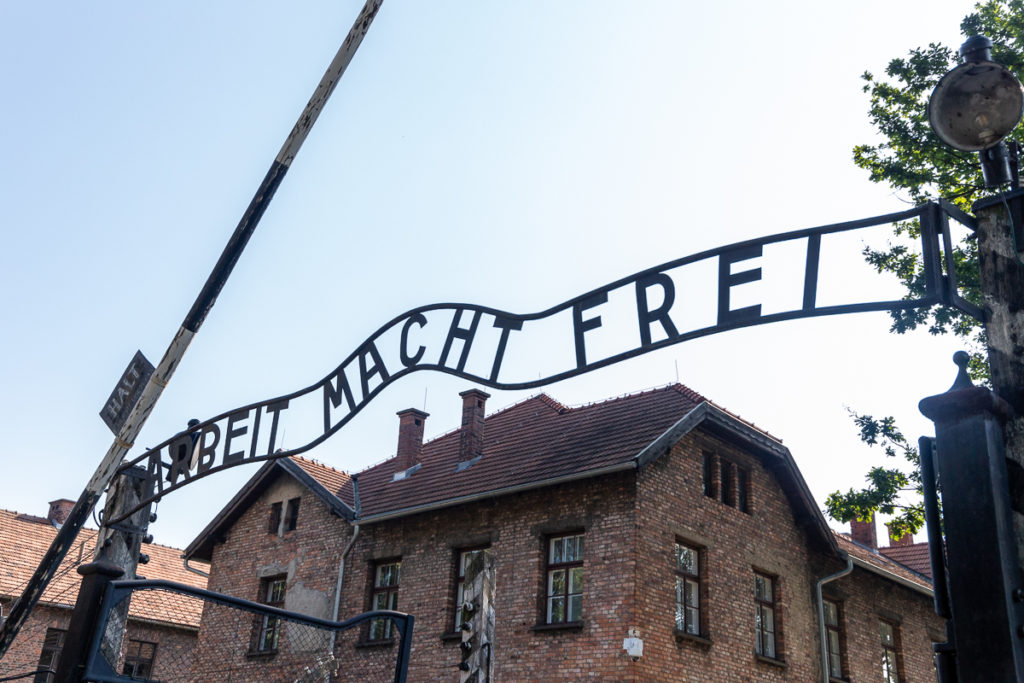
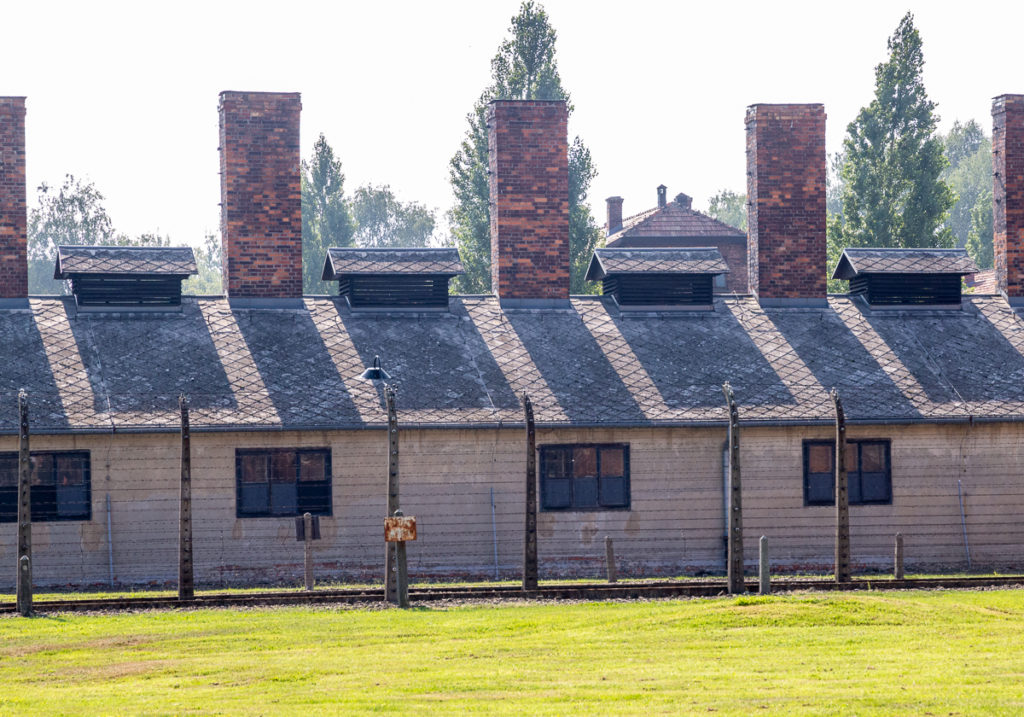
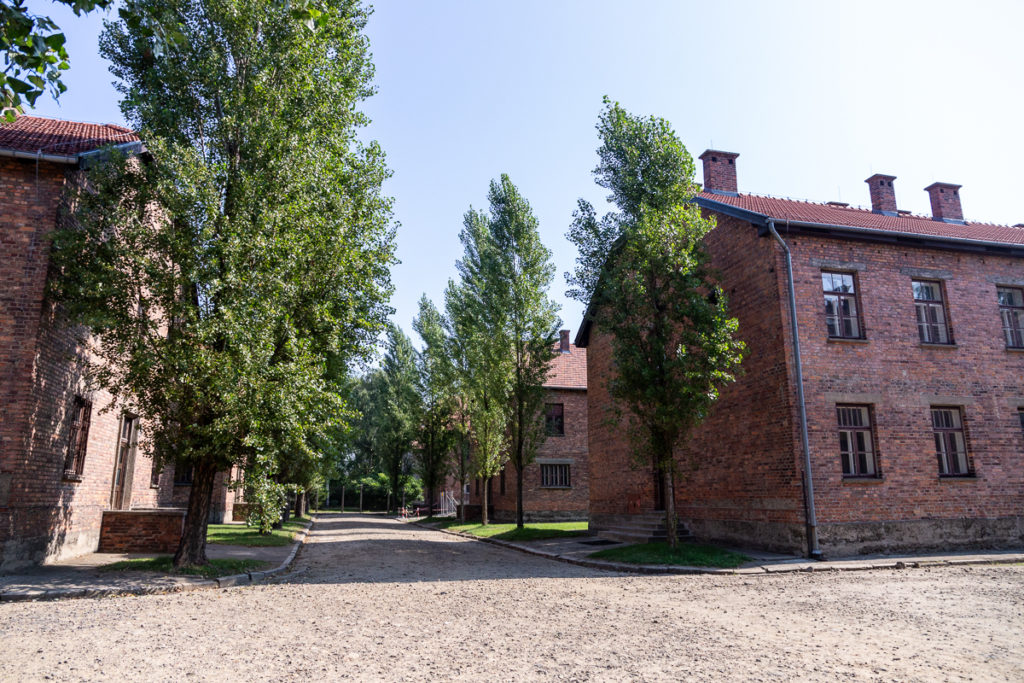
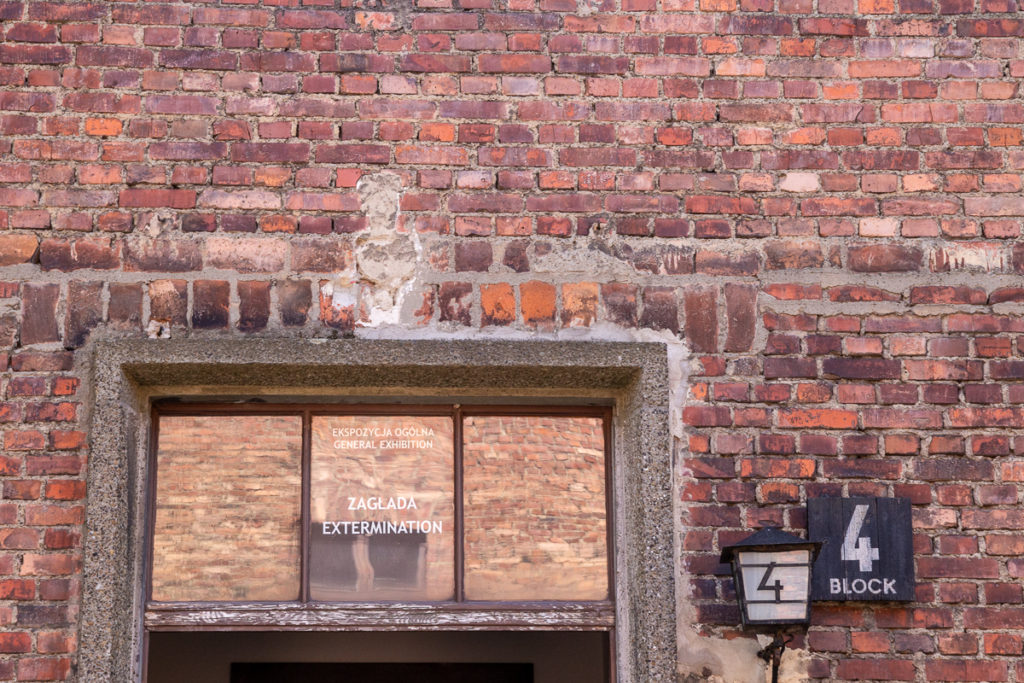
Birkenau is less than two miles from Auschwitz I. Auschwitz wass a complex of more than 40 camps, so Birkenau is referred to as Auschwitz II. It was the largest of the camps within the Auschwitz complex.
To construct the camp, the Nazis evicted the people from their homes it had been the village of Brzezinka. The camp opened in March 1942 to ease the congestion in Auschwitz I and intended for 125,000 prisoners The camp consisted 4 crematoria were built each with a gas chamber, a disrobing area and crematory ovens. Gassings were carried out using Zyklon B gas.
The camp was closed in 1944 and the crematoria were all blown up, but the remains can still be seen.
The immensity of Birkenau with more than 345 acres was difficult to capture in a photo. Few buildings exist where more than 300 once stood. All the remaining chimneys signify buildings.
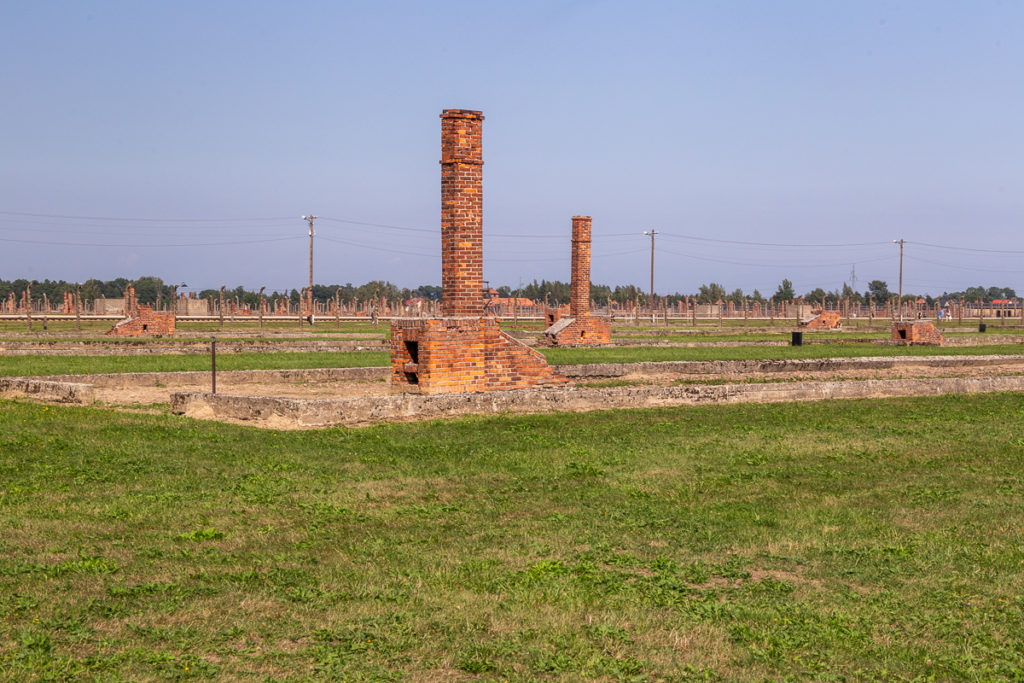
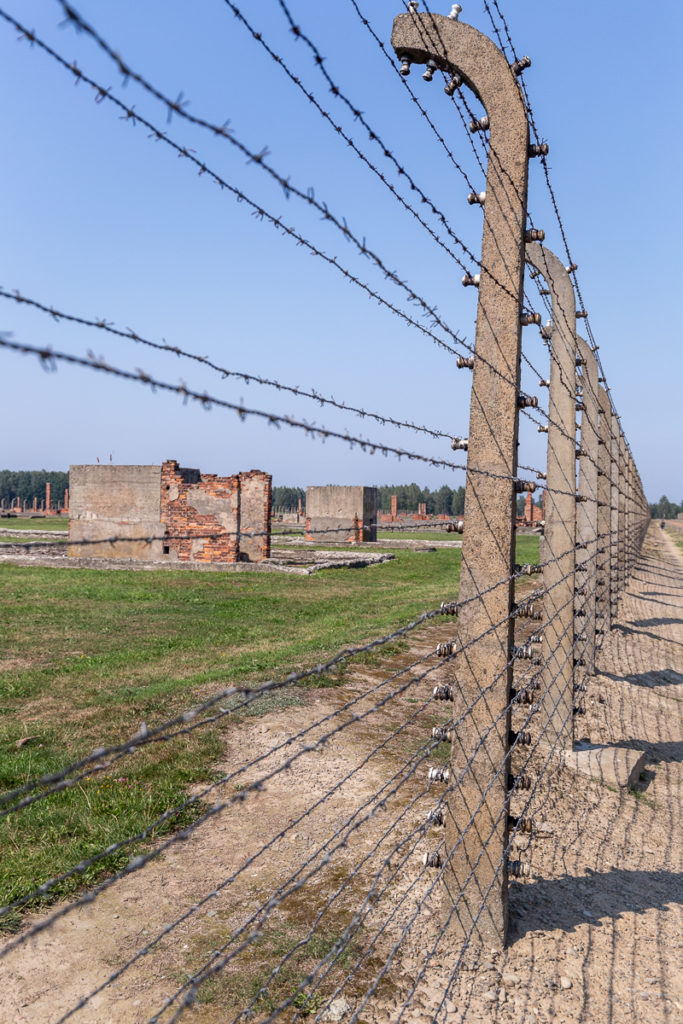

Ever present in the camps are railroad tracks and fences…they seem the symbol of this camp’s history.
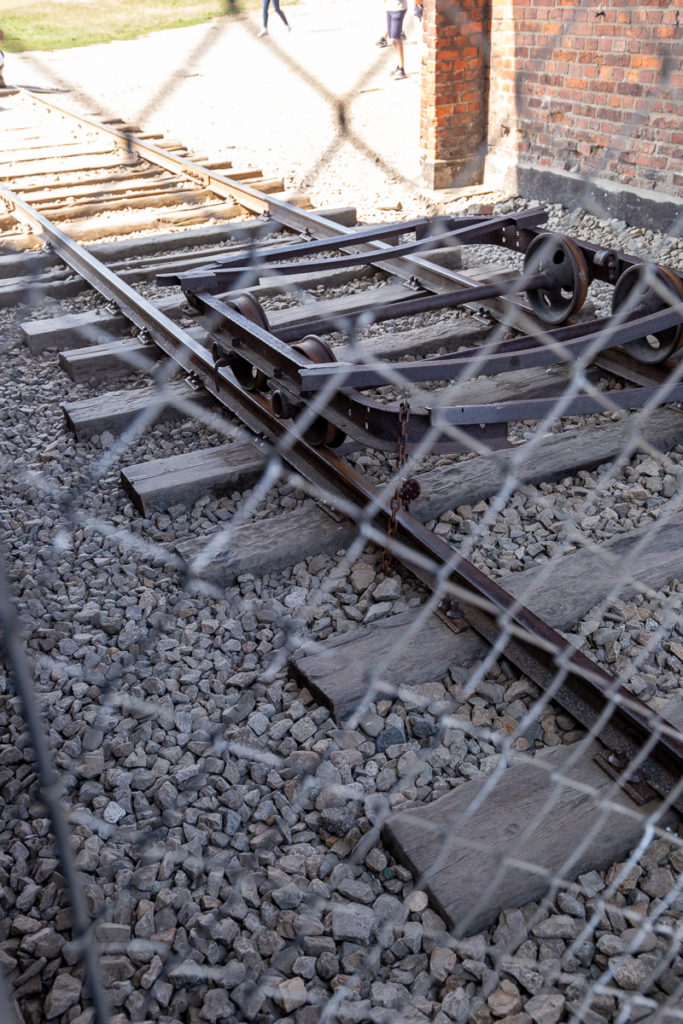
The end of the line – in so many ways.
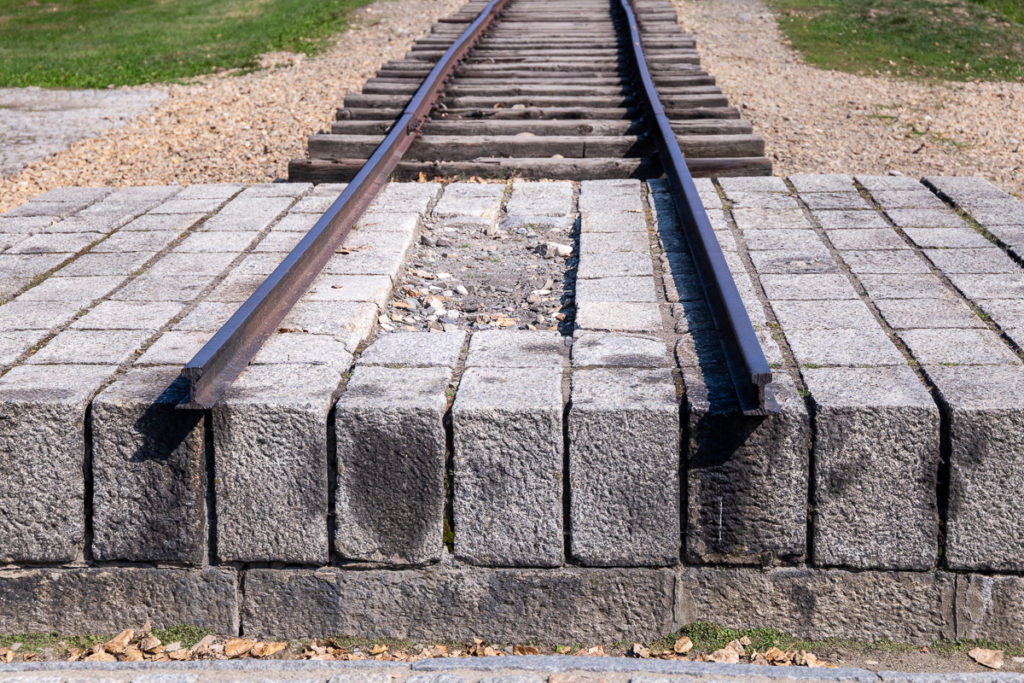
Birkenenau Memorial
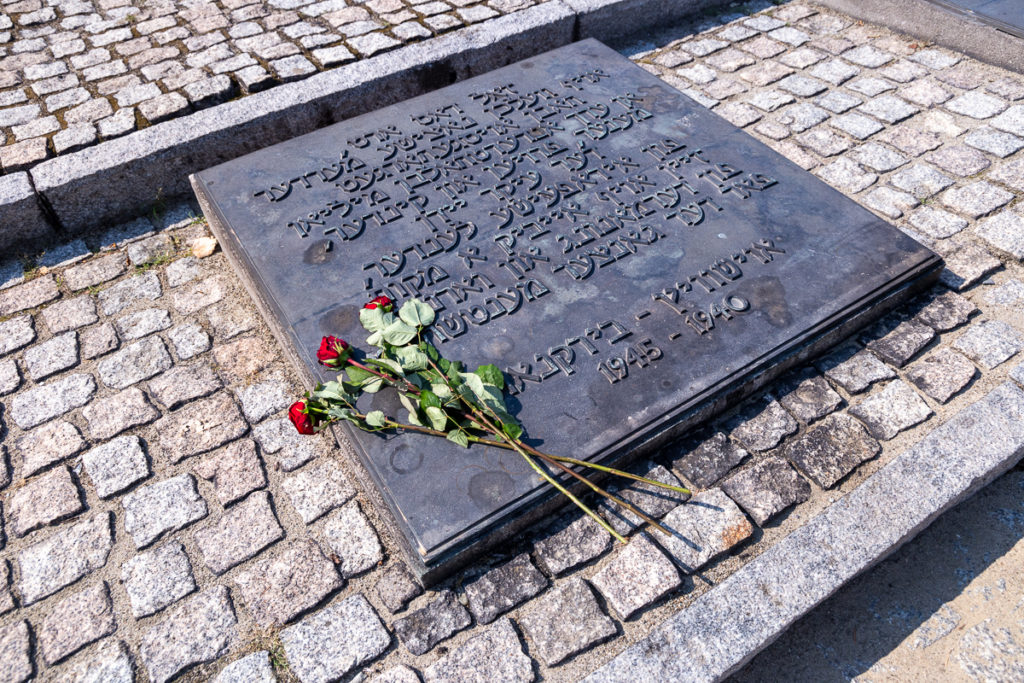
Gleiwitz
The history surrounding this tower was hard for me to grasp. My initial take away was — prisoners, “grandmother died”, “canned goods”, Nazis faked something as excuse for invasion, VERY important place. It might have been my guides English or my tiredness from the day, but I couldn’t put it together. So thankfully the internet explained.
In 1939 this town was in Germany and on the night of August 31st the Nazis staged a covert operation to give the appearance that the radio station had been attacked by pro-Polish supporters. After “seizing ” the radio tower these “activists” broadcast anti-German messages in Polish. This was what the Nazis wanted the world to believe. But what came out at the Nuremberg trial was the attack had been staged by the Nazis, operation “grandmother died”. Using several prisoners from Dachau who had been dressed in Polish uniforms these prisoners (“canned goods”) under orders attacked the radio station. The Nazis shot dead these prisoners and disfigured their faces so identification was impossible. The Nazis furthered the narrative they had been attacked by pro-Polish activists by the murder of Franciszek Honiok a German farmer known for having pro-Polish sympathies.
With this event and similar events in Germany, the Nazis created the story that the Poles were attaching German towns. This was the opening for the invasion of Poland on September 1, 1939.
What I realized after reading all of this on the internet – the missing piece. The radio station had not been in Poland in 1939 but in Germany. That made the whole story come together. Somehow that had been lost in translation, as they say.
We visited this site on August 31, exactly 80 years after the incident. There were flowers on the site marking the anniversary.
